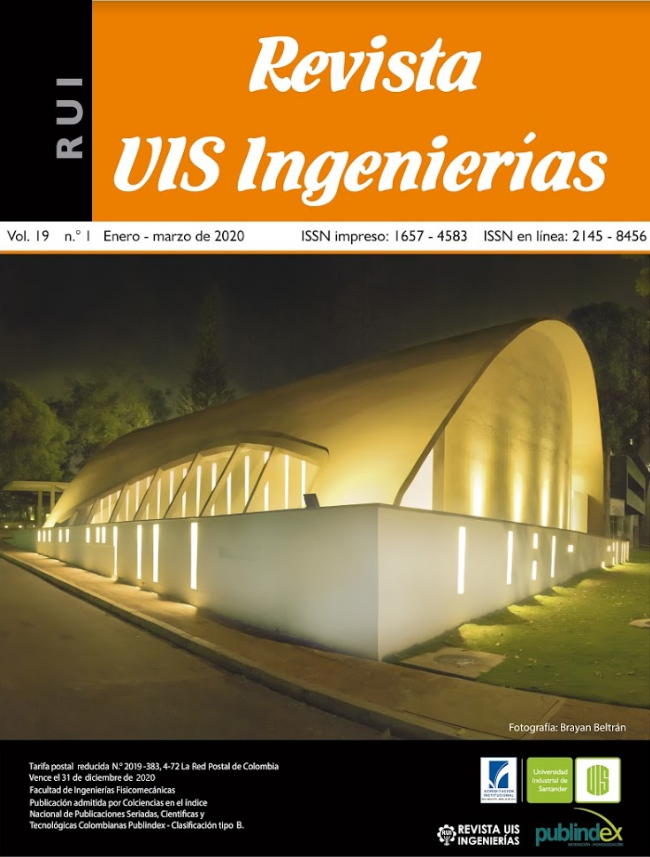Published 2020-01-03
Keywords
- amorphous gray iron ribbons,
- melt-spinning method,
- mechanical properties
How to Cite
Copyright (c) 2020 Revista UIS Ingenierías

This work is licensed under a Creative Commons Attribution-NoDerivatives 4.0 International License.
Abstract
Amorphous gray iron ribbons can be used as reinforcement fibers in the manufacture of composite materials due to a unique combination of high yield strength and a high hardness with good ductility. Amorphous ribbons with a thickness of 20 μm and width of 1.5 mm of Fe73Cr8PxSi12-xC7 (x = 9, 10, 11) alloy were prepared by melt-spinning method. The elaborated alloys were structurally investigated by x-ray diffraction (XRD) and differential scanning calorimetry (DSC), while the mechanical properties were investigated by tensile microhardness and bending tests. It was found that increasing P content up to 10 atomic percentages led to a brittle material.
Downloads
References
[2] K. Talantova, “Маchine Building”, Proceedings of Higher Educational Institutions, Rusia, 2014, pp. 99–106. doi: 10.18698/0536-1044
[3] S. K. Nayar and R. Gettu, “Benefits of using amorphous metallic fibres in concrete slabs-on-grade,” RILEM Tech. Lett., vol. 1, no. 0 SE-Articles, Dec. 2016, doi: 10.21809/rilemtechlett.2016.20.
[4] C. Jiang, Y. Wang, W. Guo, C. Jin, and M. Wei, “Experimental Study on the Mechanical Properties of Amorphous Alloy Fiber-Reinforced Concrete,” Adv. Mater. Sci. Eng., vol. 2018, 2018, doi: 10.1155/2018/2395083.
[5] Z. Li, S. Zhou, G. Zhang, and W. Zheng, “Highly Ductile and Ultra-Thick P-Doped FeSiB Amorphous Alloys with Excellent Soft Magnetic Properties,” Materials (Basel)., vol. 11, no. 7, p. 1148, Jul. 2018, doi:10.3390/ma11071148.
[6] C. Wang et al., “Effect of P on glass forming ability, magnetic properties and oxidation behavior of FeSiBP amorphous alloys,” Intermetallics, vol. 84, pp. 142–147, 2017, doi: 10.1016/j.intermet.2016.12.024.
[7] D. Chicot et al., “Mechanical properties of an Al91–Mn6–Nd3 nanostructured alloy,” Mater. Sci. Eng. A, vol. 528, no. 22, pp. 7041–7051, 2011, doi: 10.1016/j.msea.2011.06.003.
[8] H. X. Li, Z. C. Lu, S. L. Wang, Y. Wu, and Z. P. Lu, “Fe-based bulk metallic glasses: Glass formation, fabrication, properties and applications,” Prog. Mater. Sci., vol. 103, pp. 235–318, 2019, doi: 10.1016/j.pmatsci.2019.01.003.

